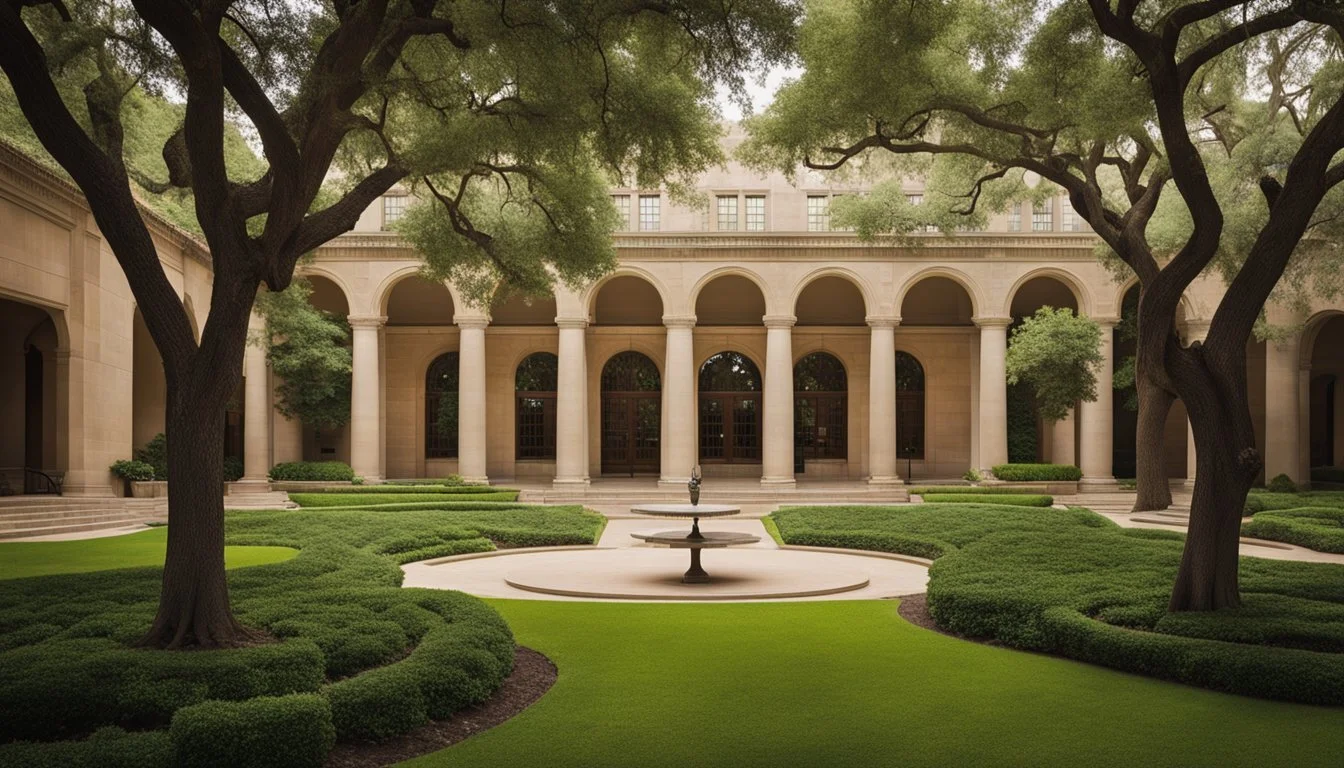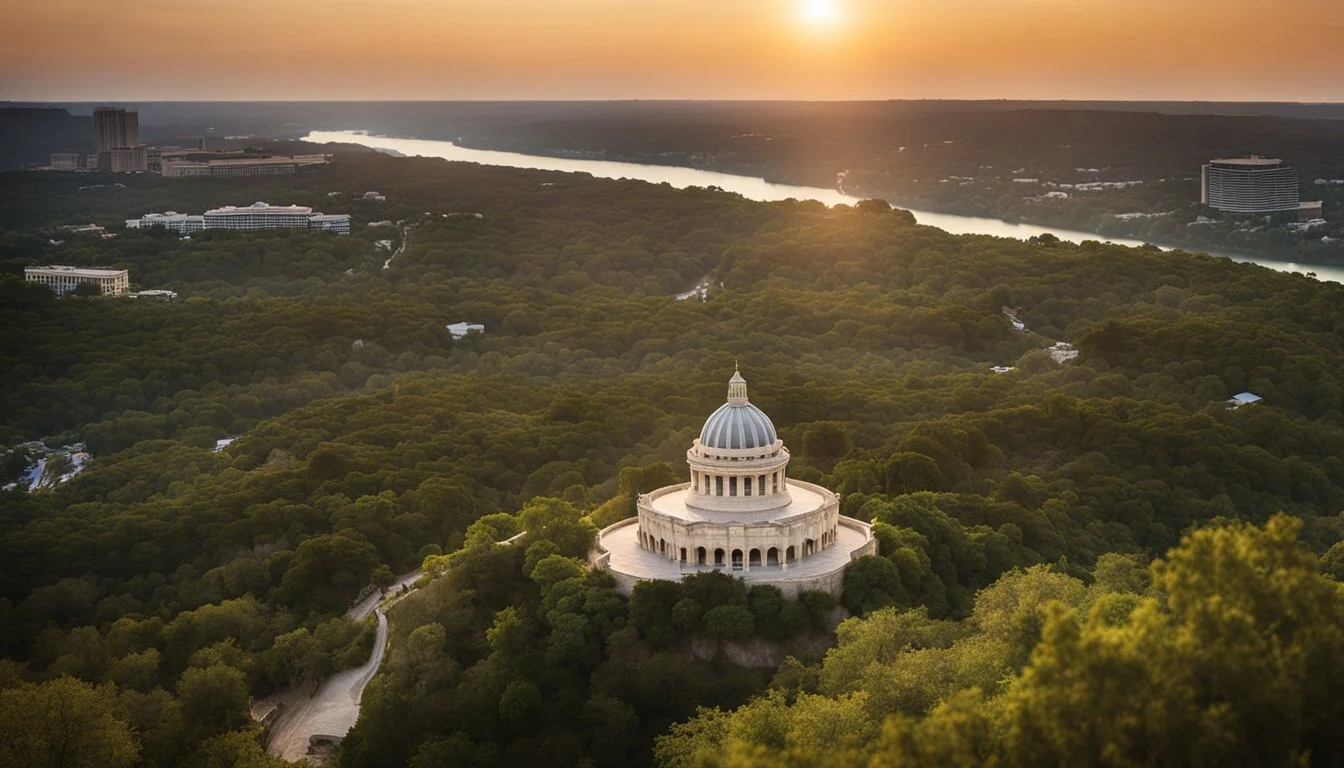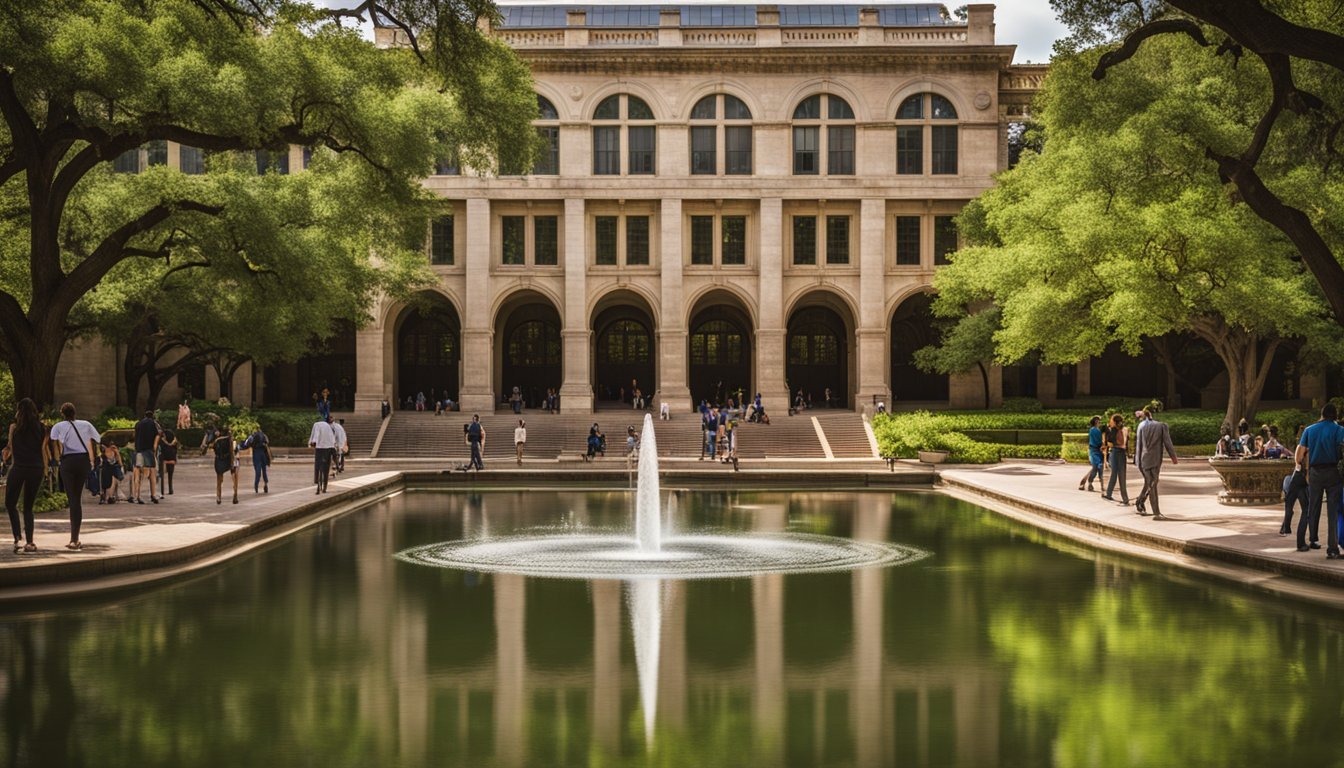8 Hidden Gems Around UT Austin
Discover the Best Kept Secrets
The University of Texas at Austin is renowned for its vibrant campus life and bustling urban surroundings. Beyond the well-known landmarks and popular spots, there exists a collection of hidden treasures that often go unnoticed by many students and visitors.
Discovering these hidden gems can enhance one's experience and bring a new appreciation for the unique aspects of UT Austin. From serene natural retreats to quirky local attractions, exploring these lesser-known places offers a refreshing perspective on campus life and the city itself.
1) Blanton Museum of Art
Located at the University of Texas, the Blanton Museum of Art is a cornerstone of Austin's cultural scene. It boasts over 21,000 works, making it one of the most comprehensive collections in Central Texas.
Visitors are often struck by its modern architecture, featuring spacious galleries filled with natural light. The museum highlights include significant pieces in Abstract Expressionism and contemporary art.
Ellsworth Kelly's "Austin" is a standout feature, an elegant stone structure that welcomes art enthusiasts. Inside, the museum offers year-round traveling exhibitions that ensure there's always something new to discover.
Blanton's address is 200 E. Martin Luther King Jr. Blvd., with convenient drop-off points on Brazos St. For any inquiries, they can be reached at 512-471-5482. The museum enriches the local art scene, making it a must-visit for anyone in the area.
2) Mayfield Park and Nature Preserve
Mayfield Park and Nature Preserve is a peaceful retreat in the heart of Austin. This 23-acre park, located just a short drive from the University of Texas, offers visitors a chance to escape the city's hustle and bustle.
The park features a historic cottage, built in the 1870s, which adds a charming touch to the serene surroundings. The cottage is often used for weddings and other events, making it a picturesque backdrop for special occasions.
Visitors can enjoy the lush gardens, home to vibrant peacocks, turtles, and koi fish. The gardens were developed into a botanical haven by Mary Frances and Milton Gutsch, who inherited the property from her father, Allison Mayfield, in 1909.
Mayfield Park also includes several short hiking trails, all less than 0.2 miles long, allowing guests to explore the natural beauty without a strenuous trek. These trails wind through the nature preserve, providing an opportunity to observe local wildlife and enjoy the scenic landscape.
The park is listed on the National Register of Historic Places, highlighting its cultural and historical significance. The tranquil atmosphere and rich history make Mayfield Park and Nature Preserve a must-visit destination for anyone looking to experience a hidden gem near UT Austin.
3) The Harry Ransom Center
The Harry Ransom Center, located at the University of Texas at Austin, is a treasure trove for art and literature enthusiasts. This archive, library, and museum boasts an impressive collection of literary and cultural artifacts from both the Americas and Europe.
Among the notable items on display is a Gutenberg Bible, which is one of the few remaining original copies in the world. Visitors can also find the oldest surviving photograph, created by Joseph Nicéphore Niépce in the 1820s.
Additionally, the Center houses a first edition of "Alice's Adventures in Wonderland" and Edgar Allan Poe's writing desk. This creates a unique opportunity to connect with artifacts that have shaped literary history.
The Harry Ransom Center offers free admission and tours, allowing guests to explore its extensive exhibits that cover various fields, including literature, photography, film, art, and performing arts. Notable exhibits feature works by Frida Kahlo and prominent figures in early photography.
Through its diverse and rich collection, the Harry Ransom Center serves as a vital hub for those interested in the study of humanities and the arts. With millions of manuscripts, rare books, and photographs, it provides an unparalleled glimpse into the cultural and artistic history of the past centuries.
4) Mount Bonnell
Mount Bonnell offers breathtaking views at the highest point within Austin's city limits. Rising to 775 feet above sea level, it stands as a notable spot in the Texas Hill Country. Visitors are often drawn to its peak for panoramic vistas of Lake Austin and the surrounding areas.
Accessing Mount Bonnell involves climbing 102 steps, leading to a summit that rewards with expansive scenery. This viewpoint has made it a favored destination among locals and tourists alike. The location also serves as a notable spot for picnics and small outdoor gatherings.
Situated at 3800 Mount Bonnell Road, it remains a natural highlight of Covert Park. The park itself spans 5.1 acres and offers various spots for relaxation and nature appreciation. Originally donated to the City of Austin by Frank Covert in 1939, it holds both historic and cultural significance.
Even though it may not match the height of peaks found in mountainous regions, the charm and serenity of Mount Bonnell create a unique and valued experience. Whether for exercise, photography, or simple enjoyment of nature, it caters to a variety of interests and activities.
5) Bullock Texas State History Museum
Located a few blocks north of the Texas State Capitol at 1800 North Congress Avenue, the Bullock Texas State History Museum offers a deep dive into the rich history of Texas.
The museum features three floors of exhibition galleries, each filled with artifacts and exhibits that showcase key moments in the state's history. Visitors can explore varied exhibits that touch on everything from the state's earliest settlement to contemporary achievements.
A highlight is the IMAX® Theatre, which offers an immersive viewing experience. The Texas Spirit Theater provides additional educational programming with multi-sensory effects, bringing history to life.
The museum also includes The Star Cafe, where visitors can enjoy a meal, and the Bullock Museum Store, which offers a variety of unique items and souvenirs. The striking architecture, crowned with a majestic copper dome and a 35-foot-tall bronze star, makes it a standout landmark in Austin.
6) The Driskill Hotel
The Driskill Hotel, situated at 604 Brazos St., is an iconic landmark near UT Austin. Established in 1886, it exudes historical charm and elegance. The hotel's opulent architecture features gleaming marble floors, stained-glass ceilings, and towering columns, making it a visual treat for visitors.
Guests can experience boutique luxury in its tastefully designed rooms and suites. Each room is furnished with designer pieces, high ceilings with crown moldings, and brocade carpeting. The elegant aesthetic continues throughout the hotel, providing a consistent atmosphere of sophistication.
The Driskill is renowned not just for its accommodations but also for its dining. The on-site restaurant offers award-winning cuisine, making it a preferred spot for food enthusiasts. Additionally, the hotel's location in the heart of Austin means guests are just steps away from popular attractions and nightlife on 6th Street.
With its rich history and luxurious amenities, The Driskill Hotel offers a unique lodging experience that reflects the spirit of Austin. Whether visiting for a night or an extended stay, it remains a top choice for those seeking both comfort and a touch of history.
7) LBJ Presidential Library
Located at 2313 Red River Street on the University of Texas-Austin campus, the LBJ Presidential Library is a significant historical site.
It offers a deep dive into the life and presidency of Lyndon Baines Johnson, who became president after John F. Kennedy's assassination.
The library houses numerous exhibits detailing Johnson's contributions, including his work on Civil Rights.
Visitors are encouraged to explore interactive sections like the "humor of LBJ," which provide engaging insights into his personality.
Candid photos and videos enrich the experience, making historical events more tangible.
For those interested in American history, this library is a must-visit.
8) Lady Bird Johnson Wildflower Center
The Lady Bird Johnson Wildflower Center is a botanical treasure located about ten miles southwest of downtown Austin. It serves as a hub for conserving native Texas plants and features sustainable gardens and an arboretum.
Visitors can enjoy a variety of plant species, with over 10,000 types native to Texas. The center's 284 acres provide a stunning display for nature enthusiasts.
Admission is $15 for adults, $10 for seniors 65+, and $8 for youth ages 5-17. Children under 4 and UT students, staff, and faculty with ID get in free. It is open daily from 9 a.m. to 5 p.m.
The grounds are perfect for family photos, with numerous architectural features, lawns, and gardens offering picturesque backdrops. Attractions include an array of educational programs focused on sustainable gardening and plant conservation.
Historical Significance
UT Austin is steeped in history, with landmarks and cultural spots that tell the story of the university and its impact on the community.
Notable Historical Landmarks
The Tower
The Main Building Tower is one of UT Austin’s most iconic structures. Standing at 307 feet, it has witnessed significant events since its completion in 1937. The Tower also offers a panoramic view of the city and serves as a notable symbol of the university.
Littlefield Fountain
Installed in 1933, the Littlefield Fountain was intended to honor students and alumni who died in World War I. This fountain, located in front of the Tower, is both a visual centerpiece and a historical memorial.
Blanton Museum of Art
Located on campus, the Blanton Museum of Art houses a significant collection of European, Latin American, and contemporary American art. Established in 1963, it plays a crucial role in preserving the cultural history of the region.
Cultural Heritage
The Battle Oaks
These ancient oak trees, predating the university itself, are a living monument to Texas history. The Battle Oaks reside near the Texas Union, offering a tangible link to the 19th century and creating a serene canopy on campus.
Hogg Memorial Auditorium
Named after Texas Governor James S. Hogg, the Hogg Memorial Auditorium is one of the university’s oldest performing arts venues. Opened in 1933, it has hosted numerous cultural events including concerts, lectures, and theatrical performances.
The Texas Union
Constructed in 1933, the Texas Union has long been a central hub for student activities, embodying the cultural spirit of UT Austin. It hosts various events, from film screenings to social gatherings, fostering a vibrant campus life.
The historical landmarks and cultural heritage sites on and around UT Austin campus reflect the diverse and rich history of the university.
Local Arts and Entertainment
Austin’s vibrant arts scene offers a variety of independent art galleries and live music venues, providing cultural enrichment and entertainment to residents and visitors alike.
Independent Art Galleries
The Blanton Museum of Art, located at the University of Texas campus, features a rich collection of over 18,000 works spanning from ancient to contemporary art. It also hosts rotating exhibitions, making each visit unique.
For those interested in more eclectic offerings, the Yard is home to several smaller galleries showcasing local and emerging artists. This creative hub often features mixed-media displays and interactive art installations.
Meanwhile, the Art for the People Gallery on South 1st Street highlights works by Austin-based artists and craftspeople, making it a must-visit for anyone interested in local culture.
Live Music Venues
Austin's love for live music comes alive at venues like Hole in the Wall. Located near the UT campus, this iconic spot has been supporting local musicians since 1974, hosting a variety of genres from indie rock to country.
Cactus Café, situated inside the UT Texas Union, offers an intimate listening experience with a focus on singer-songwriters and acoustic performances. The Café has hosted many legendary artists in its storied history.
For a bigger experience, Stubbs BBQ combines great food with performances from well-known artists, bridging the gap between local flair and larger acts. This open-air venue is ideal for those looking to enjoy a concert under the stars.
Outdoor Activities
UT Austin is surrounded by outdoor spots that offer unique experiences, perfect for adventure enthusiasts and nature lovers alike. Discover hidden parks and scenic trails that add a touch of tranquility and excitement to your stay in the area.
Lesser-Known Parks
UT Austin students and visitors can escape to Commons Ford Ranch Metropolitan Park. This serene location offers a peaceful break from city life with sprawling meadows, a picturesque lake, and an abundance of local wildlife. Ideal for picnics and bird watching, it's a hidden gem worth exploring.
Airman’s Cave, located in the Barton Creek Greenbelt, provides a more adventurous experience. This underground cave system invites exploration and offers an escape from the typical outdoor settings. It's a great spot for those who enjoy a bit of spelunking and an off-the-beaten-path adventure.
Scenic Walking Trails
The Barton Creek Greenbelt boasts numerous scenic trails perfect for a quiet walk or a vigorous hike. These trails wind through lush greenery and offer stunning views of the creek, making it a favorite spot for both locals and visitors.
Another great spot is the Circle C Ranch Metropolitan Park. This park features beautiful trails that meander through dense woods and open fields. With well-maintained paths and markers, it's an excellent choice for anyone looking to enjoy a leisurely walk or even a jog surrounded by nature.
Each park and trail around UT Austin provides a blend of tranquility and adventure, ensuring there's something for everyone to enjoy.








